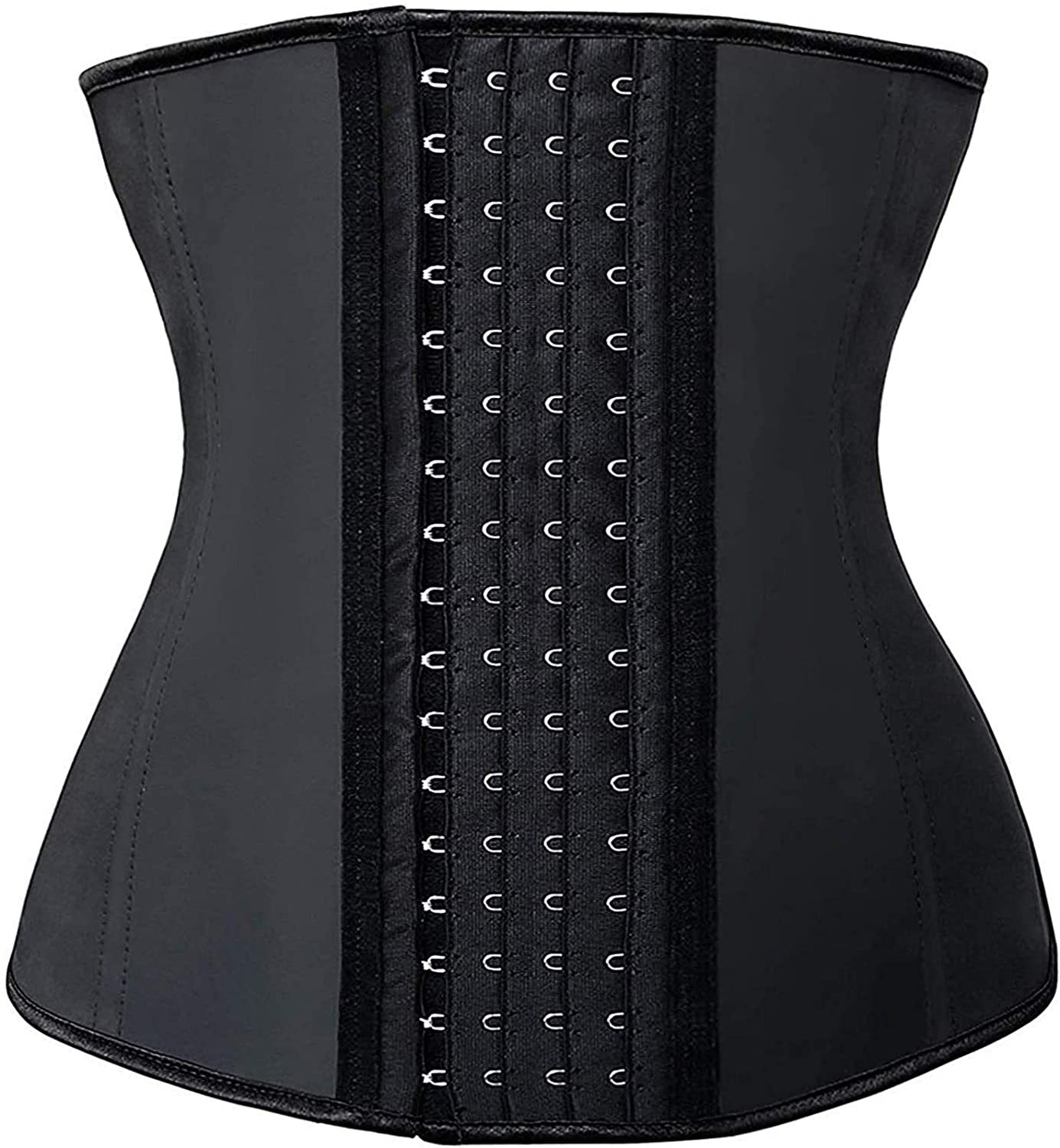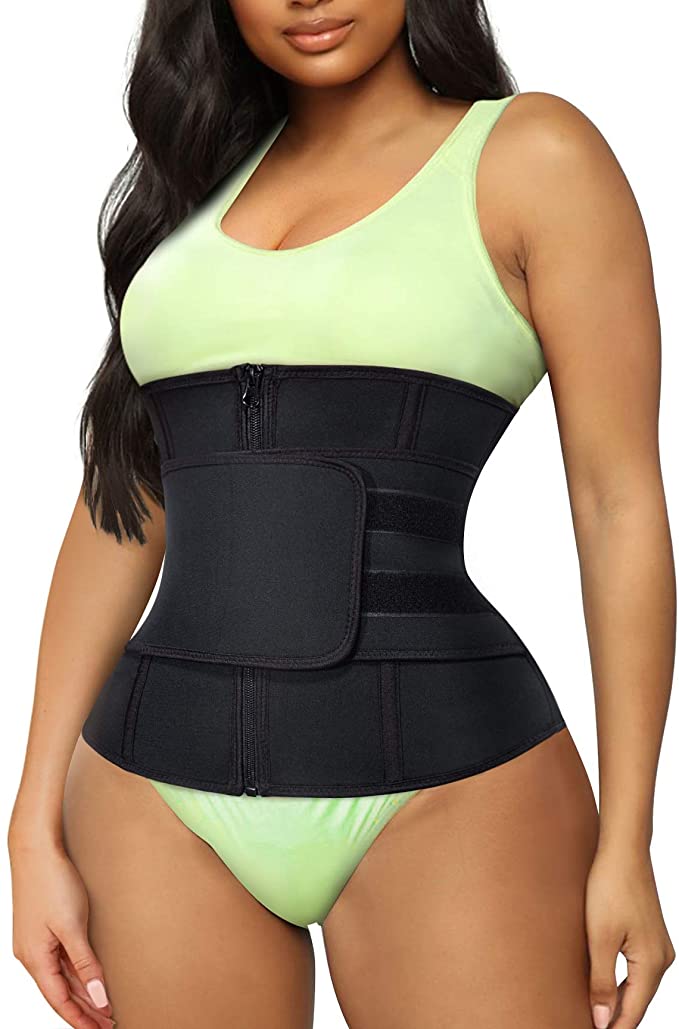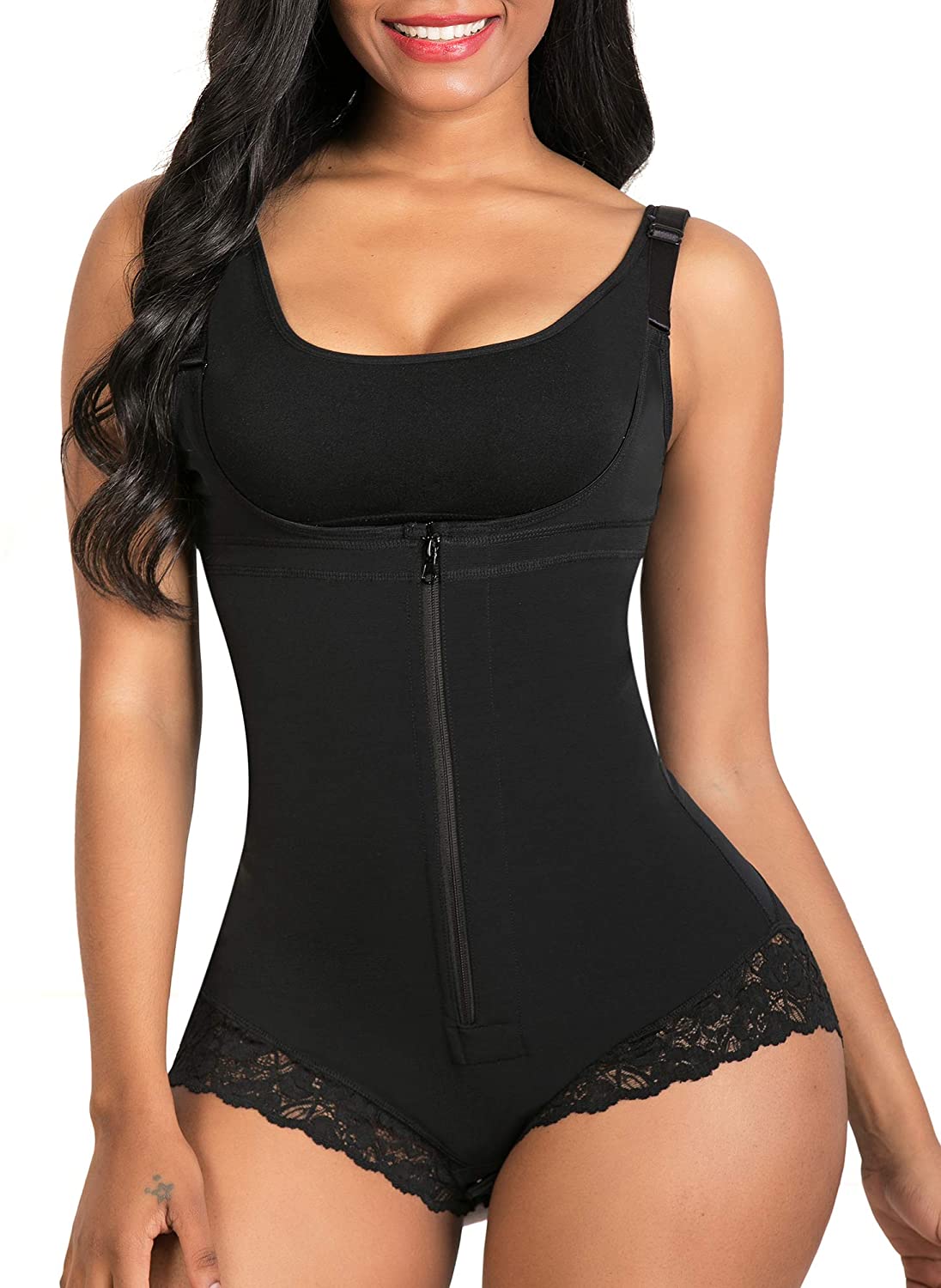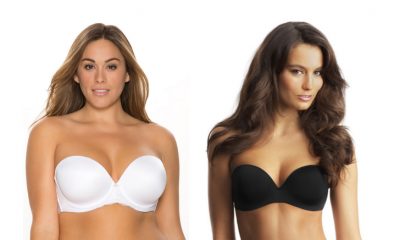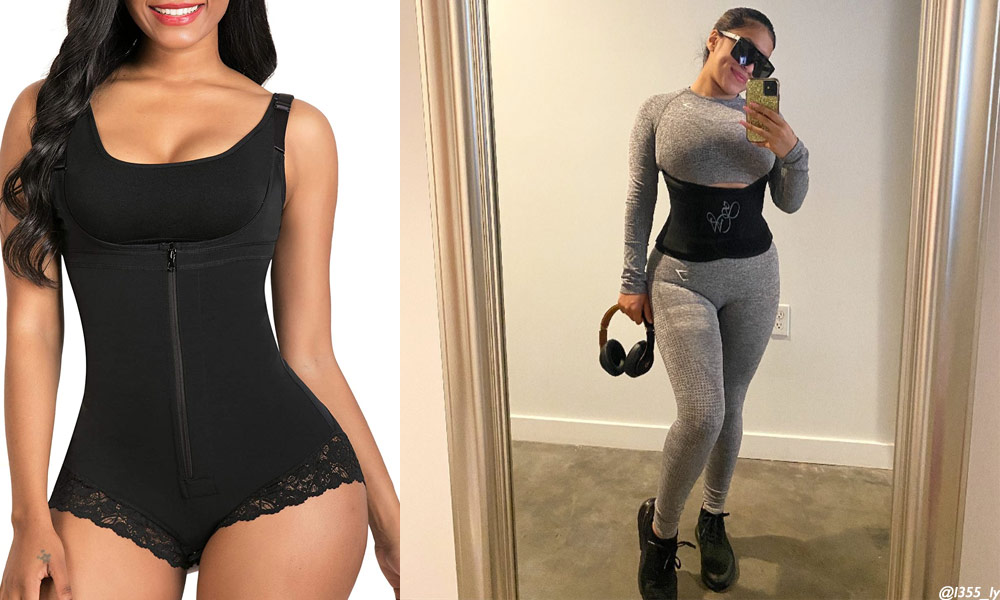
Waist trainers are actually a corset designed to define your waist and help create an hourglass figure. Also known as a waist trimmer, this item of underwear can instantly pull in your waist measurement by approx. 2 – 3 inches.
As a weight-loss aid it will only work as part of an organized change to your lifestyle and diet. But in that role it has many benefits, for example worn during a workout it will help heat up your core section causing extra perspiration around your waist and abdomen. This is worth doing as an easy way to boost the intensity of your exercise regime.
So let’s continue with some of the most common questions and useful information about this newly popular piece of underwear!
1. Three Main Types Of Waist Trainer
If you’ve already started looking at waist trainers, you’ll see that there are many different styles, materials and compression levels. And you’ll need to set your waist training goal before you buy, to ensure you get the correct type for your purposes.
- Basic waist trainers – These are usually made with a core of latex, which exerts compression to pull in your waist. This is designed for every day wear and to be undetectable under your clothing, so you can wear it all day – for up to 8 hours. This style usually fastens at the front with traditional hook-and-eye fasteners.
- Workout waist trainers – These styles are made with stronger, latex compression material, and are designed to wear when you do exercise and any physical activity. They are designed to be seen over or under your workout wear, so they are made in bright colors and patterns. They are more decorative and functional, and look attractive in a gym environment and in your exercise selfies.
- Steel-boned corsets – This is a modern version of the traditional corset you may have seen on women who dance on bar-stages in cowboy films. The bodice is ‘boned’ for strength and tightened with laces at the back. Flexible steel-bones are now used instead of whale-bone or modern latex. And this robust waist training corset will give you a much greater waist reduction as soon as you put it on.
2. How To Choose The Right Waist Trainer For You
This all depends on your aims, so here are some of the reasons women wear waist trainers.
- Regular daily waist training – Some women love how they look in a waist trainer, and choose to wear one every day. Wearing a waist cincher every day can reduce your waist measurement just by the compression holding it in, and you can carry on with your normal daily schedule. So whether or not you’re trying to lose weight, a waist trainer can improve the look of your figure.And more importantly, it will remind you to sit and stand-up straighter, which is very beneficial for your internal organs, your abdominal muscles and your spine. For beginners, an everyday waist trainer is a great starting point, but if you’re eager to lose weight think about moving up to a steel-boned corset to really encourage you to eat a healthy, slimming diet.
- For workout and exercise wear – A ‘workout band’ is designed to be worn for short periods of time during workouts. And it will stimulate the core section, making it warmer, so you sweat more and this means you get more out of your workout, without having to work harder.Workout bands are not for all-day wear, so if you want to wear a waist trainer every day, you should have two trainers – one for exercising in and the other for every day, 8-hour wear.
- Special occasion waist trainers – A latex or steel-boned corset can give fantastic figure-shaping results for a special event like a wedding or a party. As you may be wearing the waist-trainer for the first time, remember you need to break-in a latex or steel-boned corset before the event. Your body needs to get used to the compression and how it feels, as you need to feel comfortable at your special occasion!
3. Can You Wear A Body-Con Dress Over A Waist Trainer?
Women often ask if they can wear shapewear to shape their body enough to pop a body-con dress over it. The answer to that is, I’m afraid, no – you can’t wear a waist trainer with a body-con dress, because tight and stretchy-fabric clothes will show every detail of the waist trainer and look odd. 🙁
4. How to get the right size of waist trainer?
You need to measure your natural waist, at the point where you bend sideways, with a fabric tape measure. Write down the number of inches that show when you are standing up straight, breathing naturally and not holding your breath. Note down the inches when you exhale in this position. If your natural waist measures less than 38 inches, then you need a waist trainer that is between 4 – 7 inches smaller than your natural waist.
If your waist measurement is more than 38 inches, you need a waist trainer that is 7 – 10 inches smaller than your natural waist.
5. Getting started with a new waist trainer
We are not used to wearing tight or high compression underwear around our body-core, and you will need to work up to wearing a waist trainer little by little. So here’s how to wear a waist trainer for the first couple of weeks or so.
A correctly fitting latex waist trainer will feel stiff and a bit uncomfortable at first, because it has to be a snug fit. However, it must not restrict your breathing or pinch your flesh. Either of these two feelings are indications that the trainer isn’t your correct fit. So start by wearing your correctly fitting waist trainer for 1 – 2 hours on the first day.
On Day 2, add just ½ hour to the wearing time and continue to increase your wear-time gradually. After about two weeks, the garment should have molded to your body-shape, and allow it to be worn comfortably for as much as twelve hours.
6. How to break-in a steel-boned corset
Steel-boned corsets need special treatment known as ‘seasoning’ to ensure you don’t damage them by wearing the laces tied tightly until it is fully adjusted to your body. So for the first couple of weeks, wear your corset snugly-fitted, but without it being completely tightened at the back.
Increase the wear-time a little each day and when it fits your shape well, without any gaps, that’s the time to pull the laces tightly for the full waist-cinching effect.
7. How long can I wear a waist trainer each day?

The aim of wearing a waist trainer every day is to keep it on for long enough time to obtain the best results, without sacrificing your comfort and well-being. Most retailers recommend that you wear a waist trainer for a minimum of eight hours per day. This ensures you’ll be improving your posture, which is an enormous benefit to your health and muscle tone. In addition, you’ll be displaying a slimmer body shape and stay focused on your slimming diet aim of having a naturally slimmer waistline!
You can break up your eight hour sessions into two sets of four hours per day, until it starts to feel more comfortable. And you shouldn’t try to speed things up by over-wearing your trainer for more than twelve hours. Your skin needs to breathe and your body needs to relax after a long training session. Workout bands for waist training should not be worn for any more than 3 – 4 hours, as they are designed for short-time wear during exercise, and not for comfy-wear throughout a whole day.
8. Can you sleep in a waist trainer to speed-up the process?
Although some women ask if they can wear their waist trainer overnight, it’s not really a medically recommended practice. The side-effects include acid reflux and bloating as your body is not being allowed to work properly when you lie down and sleep.
9. How long before I get results from my waist trainer?
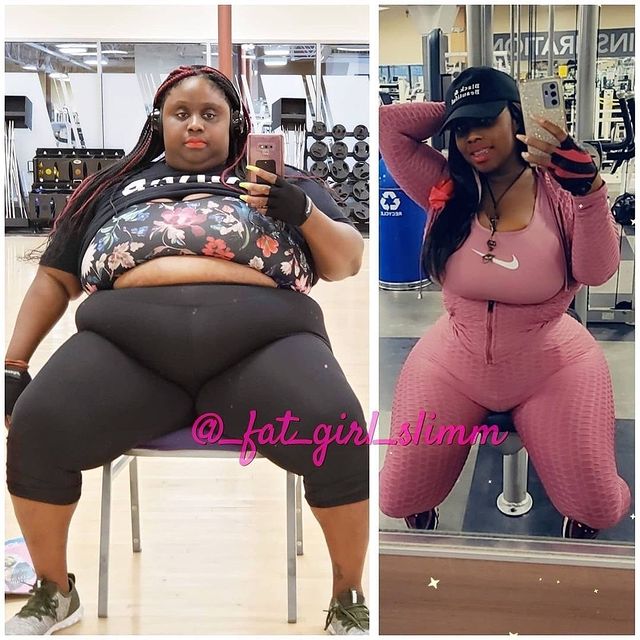
If you are committed to losing weight, you could start to see results in as little as two – three weeks. Or it may take a couple of months before you see a noticeable improvement, if you’re not cutting down your calorie intake enough. However, you won’t see any results from your waist trainer unless you use it as one part of a healthy way of life.
You need to plan a professionally-approved exercise routine, and a low-calorie, highly nutritious diet. In addition, you should ensure you stay hydrated and get as much sleep as your body needs. And if you are experiencing stress in your life, take the time to work out how you can act to remove or reduce this stress.
Your waist trainer will support and enhance your personal effort to get fit, healthy and slimmer in various ways. For instance, it makes your workouts more efficient, and shows you how great you’ll look with a permanently slimmer waist and stomach. Trainers are also a great way of reminding you to eat smaller food portions and make better food choices. And when you start feeling the benefits of a straight back and better posture, you automatically start to feel more self-confident.
10. Is waist training safe?
If you approach waist training in a sensible way and ensure you don’t overdo wear-time, waist training is quite safe. You must ensure your training garment is the best possible fit and that it doesn’t cause you any discomfort after you’ve worn it for a couple of weeks.
And do not ever wear a waist trainer that makes you feel short of breath! That is dangerous and unhealthy, as well as the wrong way to reduce your waist measurement. Used along with correct core-strengthening exercises, your waist trainer will be a real help in getting fitter.
11. Exactly what results will I see from my waist trainer?
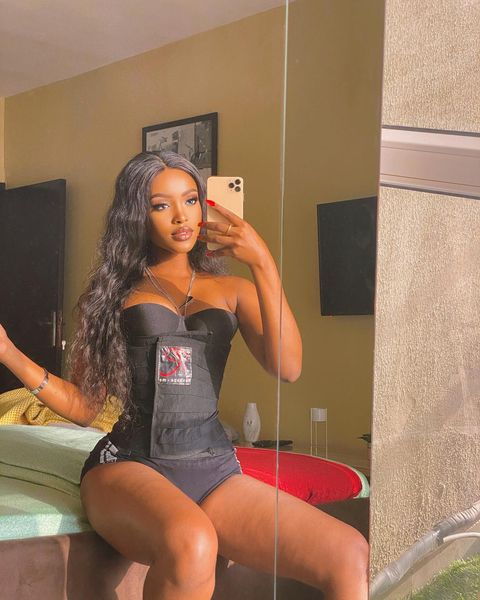
Most women see a definite improvement in their waist: hip ratio and have a smaller waist and stomach after three to eight weeks. But this all depends on several factors, including:-
- Your natural body type & genetic make-up
- How sensible you are about exercising correctly and regularly
- Cutting most processed foods and snacks out of your diet
- Switching to natural, unprocessed foods like fresh or frozen fruit & vegetables
- Eat filling meals made from unprocessed, lower calorie foods and don’t ‘starve’ yourself
Switch to a new lifestyle that continues to include core-exercise and natural foods for life and you will see a dramatic and permanent improvement in your waist and body shape. And then you can use your waist trainer to help you maintain your slimmer and curvier shape!
